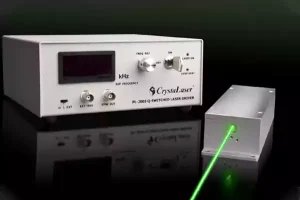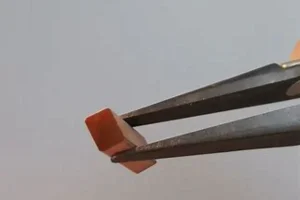Introduction
In the world of cutting-edge technology, Holmium: Yttrium Aluminium Garnet (Ho:YAG) laser crystals have revolutionized multiple industries. Notably, the medical and remote sensing fields have seen significant advancements due to the exceptional properties of these crystals. This article provides an in-depth analysis of the advancements in laser lithotripsy and remote sensing applications facilitated by Ho:YAG laser crystals.
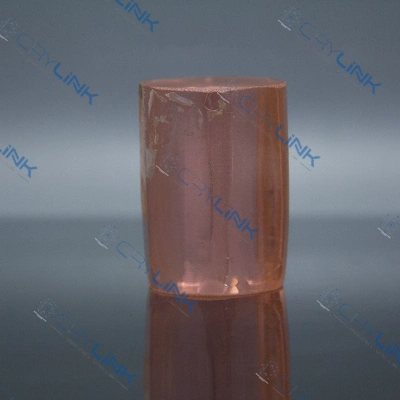
Ho:YAG Laser Crystals: The Heart of Laser Lithotripsy
To comprehend the effectiveness of Ho:YAG lasers in lithotripsy, it’s crucial to understand their working mechanism. Ho:YAG lasers operate at a wavelength of 2.1 micrometers. This specific wavelength is highly absorbed in water, which constitutes about 60% of a human body, making these lasers well-suited for medical applications.
During lithotripsy, a thin fiber carrying the Ho:YAG laser is inserted into the patient’s body. The laser energy is then directed towards the kidney stones. When the energy reaches the stone, it gets absorbed, leading to a rapid rise in temperature. This extreme localized heat causes the stone to break apart or disintegrate into minute, sand-like particles.
The precision with which Ho:YAG lasers work ensures that only the targeted stone is disintegrated, leaving the surrounding tissues unharmed. This precision is due to the laser’s short pulse duration and the small size of the laser fiber, which can be as small as 200 micrometers. This facilitates delivery of the laser energy directly to the stone, reducing collateral tissue damage.
Additionally, the high repetition rate of Ho:YAG lasers contributes to their effectiveness in lithotripsy. With a repetition rate of up to 50Hz, these lasers can deliver successive energy pulses in a short duration, increasing the rate at which the stones are fragmented. This makes the treatment process faster and more efficient.
The pulverized stone fragments are then naturally expelled from the body through urine, leading to a non-invasive and virtually painless resolution of kidney stones. This process significantly enhances patient comfort and recovery, making Ho:YAG lasers a valuable tool in modern lithotripsy procedures.
Moreover, the adjustable energy settings of Ho:YAG lasers allow for a tailored approach in treating kidney stones. Depending on the size, composition, and location of the stone, the energy settings can be adjusted to optimize the treatment outcome. This flexibility, combined with the laser’s precision and efficiency, contributes to the high success rates of Ho:YAG laser lithotripsy.
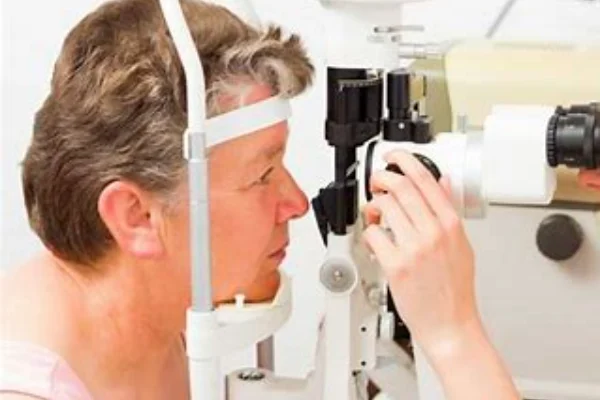
How Ho:YAG Laser Crystals Work in Lithotripsy
Holmium Energy and Its Impact on Lithotripsy
At the core of the Ho:YAG laser lies the Holmium ion (Ho3+), a rare earth element doped into a Yttrium Aluminum Garnet crystal. Holmium has a unique set of energy levels that make it ideal for lithotripsy procedures. When stimulated, the Ho3+ ions emit light in the mid-infrared spectrum, around 2.1 micrometers, which is strongly absorbed by water and biological tissue. This quality is pivotal in the functioning of Ho:YAG lasers in lithotripsy.
The Role of Pulse Width and Frequency
An important factor contributing to the efficiency of Ho:YAG lasers in lithotripsy is the pulse width and frequency. The lasers generate very short, intense pulses of light. This pulsed operation helps concentrate a lot of energy in a very short time frame, leading to highly effective stone fragmentation. The high pulse frequency, on the other hand, allows the laser to hit the stone with a rapid series of these powerful pulses, resulting in swift and effective disintegration.
Fiber Optic Delivery System and Precision
In a lithotripsy procedure, the laser energy is delivered through a fiber optic cable. This cable, as thin as a human hair, is introduced into the patient’s body via a natural orifice or a tiny incision. The tip of the fiber optic cable is positioned near the kidney stone under image guidance. This procedure allows for high precision and minimizes harm to the surrounding tissues.
Energy Absorption and Stone Fragmentation
When the Ho:YAG laser is fired, the energy is absorbed by the kidney stone, causing it to heat up rapidly. Due to the intense heat, the stone undergoes a process called “thermal expansion”, where different parts of the stone expand at different rates, causing the stone to fracture. This process is called “photo-thermal ablation”.
In addition, the strong absorption of the laser energy by water generates a microbubble at the tip of the fiber. When the laser pulse ends, this microbubble collapses, producing a shockwave that contributes to the mechanical disintegration of the stone. This is known as “photo-acoustic ablation”.

Customizing Treatment: Energy Settings and Pulse Duration
Ho:YAG lasers allow doctors to customize treatments by adjusting the energy settings and pulse duration. The flexibility to vary pulse energy and frequency enables the treatment to be tailored to the specific characteristics of each stone, such as size, hardness, and location.
Exploring the Benefits of Ho:YAG Crystals
Ho:YAG crystals provide an array of benefits making them a preferred choice in several industries.
High Energy Levels
One significant attribute of Ho:YAG crystals is their high energy levels. These lasers can generate intense energy beams, making them ideal for applications requiring strong laser outputs, like lithotripsy and remote sensing.
Efficient Mid-Infrared Emission
Ho:YAG lasers emit in the mid-infrared range, which is particularly efficient for many practical applications. This range of emission permits better interaction with the target materials, thus optimizing outcomes in medical procedures and remote sensing technologies.
Eye-Safe Wavelength
An eye-safe wavelength is a crucial benefit of Ho:YAG lasers. Emitting light at a wavelength around 2.1 micrometers, these lasers ensure the safety of human eyes in various applications, including remote sensing and surgical procedures.
Highlighting the Advantages of Ho:YAG Lasers
Ho:YAG lasers present several advantages over conventional technologies in terms of precise stone fragmentation, reduced procedure time, and long-range sensing capabilities.
Precise Stone Fragmentation
When it comes to laser lithotripsy, Ho:YAG lasers offer unmatched precision. The high-energy beams effectively break down kidney stones into minute particles, leading to a more successful and less invasive treatment.
Reduced Procedure Time
The effectiveness and precision of Ho:YAG lasers translate into reduced procedure time. This is not only beneficial for healthcare providers in terms of increased efficiency but also improves patient experience by shortening the duration of the treatment.
Long-Range Sensing Capabilities
Ho:YAG lasers, due to their eye-safe wavelength and high energy levels, are perfect for long-range sensing applications. They can transmit over large distances without loss of signal strength, providing accurate and reliable data for remote sensing operations.
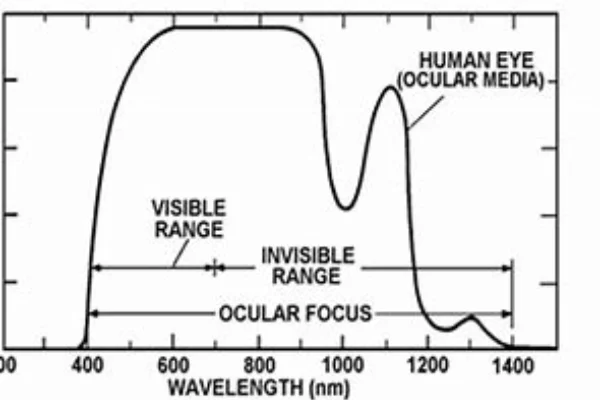
Advantages of Ho:YAG Lasers: Precision, Efficiency, and Range
Ho:YAG lasers have dramatically altered the landscape of various applications due to their precise operation, reduced procedure time, and long-range capabilities. Here, we delve deeper into these advantages.
Unparalleled Precision in Stone Fragmentation
In the domain of medical treatments, particularly in laser lithotripsy, the precision of Ho:YAG lasers is unmatched. Their high energy levels and efficient mid-infrared emissions allow the lasers to fragment kidney stones into minuscule particles. This precision reduces the risk of leftover fragments, promoting a more thorough and effective treatment process.
Reduced Procedure Time
Another significant advantage of Ho:YAG lasers is the reduction in procedure time. The efficiency and accuracy of these lasers facilitate quicker operations, whether it’s fragmenting kidney stones in lithotripsy or carrying out intricate surgical procedures. This efficiency not only eases the strain on medical professionals but also enhances patient comfort and recovery.
Long-Range Sensing Capabilities
In the realm of remote sensing, the long-range capabilities of Ho:YAG lasers set them apart. Their eye-safe wavelength, coupled with high energy levels, enables these lasers to transmit signals over vast distances without any significant loss of strength or accuracy. As such, they offer more precise and reliable data collection, making them invaluable in environmental monitoring, topographical mapping, and more.

Conclusion
To conclude, Ho:YAG laser crystals have brought about remarkable advancements in laser lithotripsy and remote sensing. From revolutionizing non-invasive kidney stone treatments to paving the way for safe and effective remote sensing, Ho:YAG laser crystals’ impact is far-reaching. The high-energy levels, efficient mid-infrared emission, and eye-safe wavelength of these crystals highlight their immense potential for future innovations.
FAQs
- 1. What is a Ho:YAG laser crystal?
- A Ho:YAG laser crystal is a type of solid-state laser that utilizes the rare earth element Holmium doped into a crystal host of Yttrium Aluminum Garnet.
- 2. How does a Ho:YAG laser work in lithotripsy?
- Ho:YAG lasers generate a high-energy beam that disintegrates kidney stones into tiny particles, allowing them to be expelled from the body naturally and painlessly.
- 3. What is the significance of Ho:YAG lasers in remote sensing?
- Due to their eye-safe wavelength, Ho:YAG lasers are perfect for remote sensing applications. They can propagate over long distances without causing harm to the human eye, allowing for precise environmental data collection.
- 4. Are there any other applications of Ho:YAG lasers?
- Yes, Ho:YAG lasers are also used in areas such as surgical procedures, material processing, and scientific research.
- 5. What makes Ho:YAG lasers effective in reducing procedure time in lithotripsy?
- The precision of stone fragmentation provided by Ho:YAG lasers, coupled with their compatibility with smaller fibers, allows for a quicker and more efficient treatment, hence reducing procedure time.


